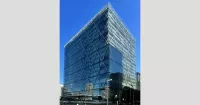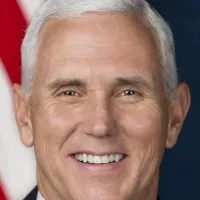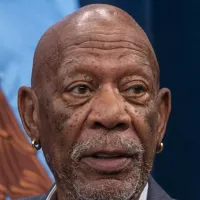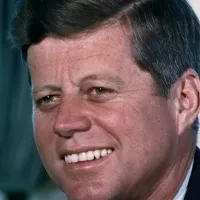The French Open, also known as Roland-Garros, is an annual Grand Slam tennis tournament held at Stade Roland Garros in Paris, France. Organized by the French Tennis Federation, it is the second Grand Slam event of the year, following the Australian Open and preceding Wimbledon and the US Open.
1902: Mixed doubles event added
In 1902, the mixed doubles event was added to the French Championships tournament.
1907: Women's doubles event added
In 1907, the women's doubles event was added to the French Championships tournament.
1912: World Hard Court Championships held at Stade Français
From 1912 to 1914, the World Hard Court Championships were held at Stade Français in Saint-Cloud.
1913: Anthony Wilding wins World Hard Court Championships
In 1913, Anthony Wilding from New Zealand won the World Hard Court Championships, held at Stade Français in Saint-Cloud.
1914: Anthony Wilding wins World Hard Court Championships
In 1914, Anthony Wilding from New Zealand won the World Hard Court Championships, held at Stade Français in Saint-Cloud.
1915: No tournament due to World War I
In 1915, the French Championships tournament was not organized due to World War I.
1919: No tournament due to World War I
In 1919, the French Championships tournament was not organized due to World War I.
1920: World Hard Court Championships held at Stade Français
In 1920, the World Hard Court Championships were held at Stade Français in Saint-Cloud.
1921: Bill Tilden wins World Hard Court Championships
In 1921, Bill Tilden from the US won the World Hard Court Championships, held at Stade Français in Saint-Cloud.
1922: World Hard Court Championships held in Brussels
In 1922, the World Hard Court Championships were held in Brussels, Belgium.
1923: World Hard Court Championships held at Stade Français
In 1923, the World Hard Court Championships were held at Stade Français in Saint-Cloud.
1924: French Championships tournament venue
In 1924, the French Championships tournament was played at its fourth venue.
1924: No World Hard Court Championships
In 1924, there were no World Hard Court Championships due to tennis being played at the Paris Olympic Games in Colombes.
1925: French Championships open to international amateurs
In 1925, the French Championships became open to all amateurs internationally. It was designated a major championship by the International Lawn Tennis Federation. The tournament was held on clay courts at the Stade Français in Saint-Cloud.
1926: French Championships held at Croix-Catelan of the Racing Club de France
In 1926, the Croix-Catelan of the Racing Club de France hosted the French Championships event in Paris on clay courts.
1927: French Championships held at Stade Français in Saint-Cloud
In 1927, the French Championships were held on clay courts at the Stade Français in Saint-Cloud.
1927: Mousquetaires win Davis Cup
In 1927, the Mousquetaires (René Lacoste, Jean Borotra, Henri Cochet, and Jacques Brugnon) won the Davis Cup on American soil, leading the French to decide to defend the cup at a new stadium.
May 1928: French International Championships moved to Stade de Roland Garros
On May 24, 1928, the French International Championships moved to the new tennis stadium at Porte d'Auteuil, named Stade de Roland Garros, and have been held there ever since.
1941: Tournoi de France held but not recognized
From 1941 through 1945, the Tournoi de France took place on the same grounds, but these events are not recognized by the Fédération Française de Tennis.
1945: Tournoi de France held but not recognized
From 1941 through 1945, the Tournoi de France took place on the same grounds, but these events are not recognized by the Fédération Française de Tennis.
1946: French Championships held after Wimbledon
In 1946, the French Championships were held after Wimbledon, making it the third Grand Slam event of the year.
1947: French Championships held after Wimbledon
In 1947, the French Championships were held after Wimbledon, making it the third Grand Slam event of the year.
1953: Trophies awarded to winners
Since 1953, trophies have been awarded to the winners of the French Open. The trophies are manufactured by Mellerio dits Meller, a famous Parisian jewelry house.
1968: French Championships becomes first Grand Slam tournament to go open
In 1968, the French Championships became the first Grand Slam tournament to go open, allowing both amateurs and professionals to compete.
1975: French Open was the only major tournament not played on grass
In 1975, the French Open was the only major tournament that was not played on grass. At the time, it was known as the premier clay court championship.
1978: French Open becomes only major played on clay courts
In 1978, the French Open became the only major tournament played on clay courts after the US Open changed to hard courts.
1979: Coupe Suzanne Lenglen awarded
Since 1979, the trophy awarded to the winner of the women's singles is called the Coupe Suzanne Lenglen.
1981: Current Coupe des Mousquetaires design created
In 1981, the current design for the Coupe des Mousquetaires, the trophy awarded to the winner of the men's singles, was created by Mellerio dit Meller.
1981: New prizes presented
Since 1981, new prizes have been presented at the French Open: the Prix Orange, the Prix Citron, and the Prix Bourgeon.
1985: Final year Suzanne Lenglen family trophy awarded
In 1985, the trophy donated by Suzanne Lenglen's family was awarded for the last time before the FFT made a copy of it.
1986: Current Coupe Suzanne Lenglen cup awarded for the first time
In 1986, the current version of the Coupe Suzanne Lenglen was awarded for the first time. It is a replica of a cup offered by the city of Nice to Suzanne Lenglen.
1988: Central court renamed Court Philippe Chatrier
In 1988, the central court of the Stade de Roland Garros was renamed Court Philippe Chatrier.
1989: Eurosport began broadcasting
Eurosport began broadcasting the French Open tournament in 1989.
1996: Pete Sampras reaches semi-finals
In 1996, Pete Sampras reached the semi-finals of the French Open. This was his best result at the tournament.
2004: Plans to build a covered stadium
From 2004 to 2008, plans were developed to build a covered stadium with a roof at the French Open, due to continued complaints over delayed matches.
2004: Big Three featured in final
Since 2004 and before 2024, a member of the Big Three (Roger Federer, Rafael Nadal and Novak Djokovic) was featured in the final of the French Open.
2006: Tournament begins on a Sunday
Since 2006, the French Open tournament has begun on a Sunday, featuring 12 singles matches played on the three main courts.
March 2007: Equal prize money for men and women
In March 2007, it was announced that the French Open would provide equal prize money for both men and women in all rounds for the first time.
2007: Tennis Channel acquired pay television rights
In 2007, Tennis Channel acquired the pay television rights to the French Open and sub-licensed coverage to ESPN.
2008: Plans to build a covered stadium
From 2004 to 2008, plans were developed to build a covered stadium with a roof at the French Open, due to continued complaints over delayed matches.
2010: Tournament considering a move away from Roland Garros
In 2010, it was announced that the French Open tournament was considering a move away from Roland Garros as part of a continuing rejuvenation.
2011: Decision to maintain tournament within existing venue
In 2011, the decision was taken to maintain the French Open tournament within its existing venue, Roland Garros.
2011: BBC's coverage continued until 2011
The BBC's coverage of the French Open continued until 2011.
2012: ITV Sport televised
From 2012 until 2021, ITV Sport televised the French Open in the United Kingdom.
May 2015: City council voted against the expansion project
In May 2015, the city council voted against the expansion project for Roland Garros.
June 2015: Construction permits signed for expansion project
On June 9, 2015, Paris Mayor Anne Hidalgo announced the signing of the construction permits for the Roland Garros expansion project, with work scheduled to begin in September.
August 2015: ESPN discontinues sub-licensing
In August 2015, ESPN announced that it would discontinue its sub-licensing and drop coverage of the French Open beginning in 2016.
December 2015: Renovation work halted by Administrative Court
In December 2015, the Administrative Court of Paris halted renovation work at Roland Garros, but the French Tennis Federation won the right to proceed on appeal.
2016: ESPN discontinues sub-licensing
In 2016, ESPN discontinued its sub-licensing and dropped coverage of the French Open.
2018: Renovation work commenced
Renovation work commenced at Roland Garros at the close of the 2018 edition of the tournament.
2019: Scheduled conclusion of renovation work
The Roland Garros expansion project was scheduled to conclude in 2019.
2020: Tournament postponed and played with limited spectators due to COVID-19
The 2020 edition of the French Open tournament was postponed to late September and early October and was played in front of limited spectators due to the COVID-19 pandemic. Floodlights were also installed.
2021: ITV Sport televised until 2021
From 2012 until 2021, ITV Sport televised the French Open in the United Kingdom.
2021: Tournament back in traditional slot
In 2021, the French Open tournament was back in the traditional slot of late May and early June.
2022: Eurosport holds exclusive UK broadcast rights
As of 2022, Eurosport holds exclusive UK broadcast rights to the French Open tournament.
2022: New tiebreaker format
The 2022 edition of the French Open saw a new tiebreaker format implemented. If the deciding set is tied at six-all, the match is decided in a 10-point format.
2023: Ball persons application process
In 2023, approximately 4,000 applicants from across France applied to be ball boys and girls for the French Open. They must be between 11 and 16 years old, licensed by the French Tennis Federation, and dressed in matching Lacoste shirts and shorts.
2023: NBC moves coverage to Peacock
Starting with the 2023 edition, NBC moved some of its coverage of the French Open exclusively to its streaming service, Peacock.
June 2024: TNT Sports acquired U.S. rights
In June 2024, it was reported that the U.S. rights to the French Open had been acquired by TNT Sports beginning in 2025.
2024: Selection of Ball Collectors
For the 2024 French Open, 280 'ramasseurs de balles' (ball collectors) were scheduled to be selected for the tournament.
2024: Previous prize money pool
In 2024, the prize money pool for the French Open was less than the announced €56.352 million for 2025.
2024: Big Three not featured in final since 2004
The 2024 edition of the French Open marked the first time that a member of the Big Three (Roger Federer, Rafael Nadal and Novak Djokovic) was not featured in the final since 2004.
2025: TNT Sports to broadcast
Beginning in 2025, TNT Sports will broadcast the French Open in the U.S., with matches also available streaming on Max.
2025: Prize money pool increase announced
For 2025, the prize money pool for the French Open was announced to be €56.352 million, an increase of 5.37% compared to the prize pool for the 2024 edition.
2027: France Télévisions and Amazon Prime Video broadcast rights until 2027
France Télévisions and Amazon Prime Video hold the broadcast rights to the French Open until 2027, with all 11 "night sessions" remaining exclusive to Prime Video.
Mentioned in this timeline

Amazon Prime is a subscription service offering a variety of...
CBS Broadcasting Inc CBS is a prominent American commercial broadcast...

Sony is a Japanese multinational conglomerate based in Tokyo Its...
India officially the Republic of India is a South Asian...
New Zealand is an island country located in the southwestern...
The National Broadcasting Company NBC is a major American commercial...
Trending

9 months ago Mike Pence to receive JFK Profile in Courage Award for election action.

8 months ago Lil Wayne vows never to perform at Super Bowl after 2025 Halftime snub.

25 days ago Childcare's economic boost in Prescott Valley, Yavapai crisis, and Hochul's universal options.
2 months ago Russian Airstrikes in Ukraine Kill Six, Putin-Trump Talks Shelved Amid Escalation.

7 months ago Morgan Freeman's best thriller movie Se7en and Somerset's darker original ending explored.
18 days ago CD Projekt Dashes Cyberpunk 2077 Anniversary Teaser Hopes, Confirms No New Content
Popular

Tucker Carlson is an American conservative political commentator known for...

XXXTentacion born Jahseh Dwayne Ricardo Onfroy was a controversial yet...

Ben Shapiro is a prominent American conservative political commentator media...

Candace Owens is an American conservative political commentator and author...

William Franklin Graham III commonly known as Franklin Graham is...

John F Kennedy JFK was the th U S President...